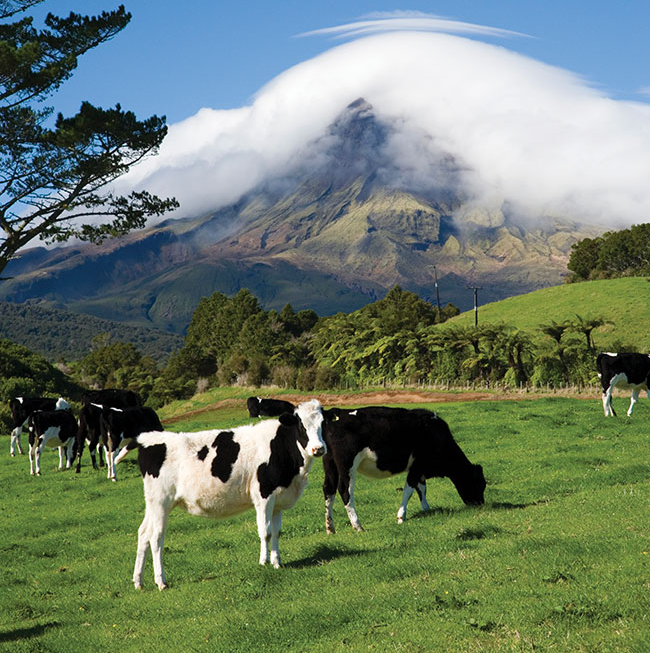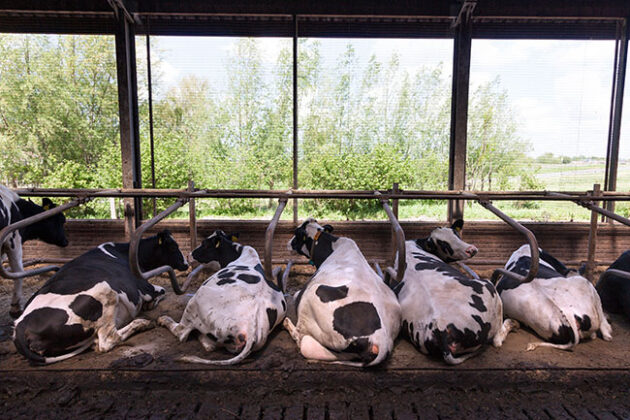
Features
Equipment
Livestock Production
Production
Balance is key: Grazing vs. housing
For cattle nutrient management, a balance of grazing and housing has its benefits
May 10, 2023 by RONDA PAYNE

People may be tired of hearing how creating a better life is all about balance, but for dairy farmers around the world, a new study incorporating existing research and fresh modelling finds that balance really is the key to making everyone happy. The study was designed to find the right mix of dairy cattle housing and/or grazing conditions to reduce the impacts of nutrient losses (particularly nitrogen and phosphorus losses into water sources) while also ensuring financial viability of operations.
Rich McDowell, chief scientist with the New Zealand-based Our Land and Water National Science Challenge, had seen a report from a colleague, noting New Zealand dairy farms have the lowest carbon footprint. He wanted to know if the same applied to nutrient losses. He and a team found 156 existing studies from around the globe to allow them to compare and contrast the various systems from year-round grazing to year-round indoor, barn-living and the associated nutrient losses.
“This was partly a literature study that used published and validated data,” he says. “There was no direct interaction with farmers, although each of the authors regularly do, do that.”
The authors of the study couldn’t rely on the existing literature alone as dairy farm management is driven by local climate and soils. To ensure they were comparing apples to apples, so to speak, they also modelled three dairy systems based on varying the duration of outdoor grazing. The models looked at durations of less than two months, three to eight months and greater than nine months leading to monikers of: confined, hybrid and fully grazed systems, respectively. This was conducted in subregions in New Zealand, the Northeastern United States and the Netherlands. Study results should be applicable to any temperate region.
Consumer-facing information has led to the belief or assumption that a system of 100 percent grazing is “better” than confined systems for animal health and welfare, reduced labor, profitability and nutrient losses. Although claims such as “pasture-fed” have created an increased pricing model for certain dairy products in many regions, there was little data to support the claims of reduced nutrient losses and environmental benefit.
The outcome from McDowell and the research team? Nitrogen losses were greatest in all-grazed (non-housed) dairy systems, but these losses are reduced by incorporating a period of housing during periods of high-risk for nutrient losses.
Therefore, housing in winter and early spring months allows for the controlled collection of manure to later be applied when needed to crop fields to increase nutrient uptake and reduce the likelihood of leaching and runoff. This hybrid model of housing and grazing also improves animal welfare during inclement weather periods.
He noted there is no evidence of differences in the phosphorus loss between the systems as phosphorus loss varies because it is dependant upon location (such as slope or flat), while nitrogen is not.
“The results have been given to respective industries,” he says. “There are different drivers within each of the countries that the authors represent.”
In a footnote from the study’s brief, he adds, “It is hoped that this study highlights the synergies or trade-offs for different dairy production systems and to guide which of those could be used to lower water quality impacts.”
In New Zealand, McDowell says, the dairy system is primarily based on year-round
pasturing. On the other end of the spectrum, he says, animals in year-round housing are proven to have health issues and reduced quality of life. Presenting the benefits from a blended system of something like seven to nine months on pasture and the remainder in housing could have positive results in the global dairy industry by bringing out the best of both systems.
“It was hoped that this would make folk aware through the understanding of these systems that there was room to change,” he says. “There are all kinds of hybrid systems like grazing for a few months. [These hybrid systems] are probably more indicative of dairy production around the world.”
In looking at the two systems and the myriad potential blended options in between both of them, there is a tipping point in terms of nutrient losses and income loss.
“A confined system creates more milk,” he says. “Hence why we thought that a hybrid system would have the benefits of both increased milk production and lower losses of nitrogen per unit of productivity. You also have the some of the benefits of grazing.”

While terms such as ‘pasture-fed’ and ‘free-range’ are popular among consumers, a hybrid method could be best.
Photo: ahavelaar/adobe stock
In New Zealand, there are factors that are pushing for improvements to nutrient losses making the study even more relevant in that region. Moving to a partly housed system in areas of wet soils during winter and early spring would reduce nutrient leaching.
“It’s very important here because next year we will have very stringent freshwater targets,” he says. “A law was recently passed that every farmer in the country had to have a freshwater farm plan to reduce their water quality footprint.”
While other regions may not have a regulatory reason to make this kind of switch, yet the need for reduced nutrient losses is present and the pressures from consumers, advocacy groups and governments are growing.
McDowell says annual loss of nitrogen and phosphorus can range from 5 to 200 kg of nitrogen per hectare and .5 to 20 kg of phosphorus per hectare. A grazed urine patch can contain between 600 and 1,000 kgs of nitrogen per hectare.
“Given that your pasture will only take up about 250 kg of that, the remainder lost through leaching,” he says. “The more cows that you have on pasture for a greater period, the more urine is deposited on the ground. In a housed system, that urine and dung is collected and can be distributed more evenly at a time of year when runoff is less likely. That crop or pasture would have more of an opportunity to take it up; that’s provided you don’t apply a ridiculous amount.”
This means regardless of whether a dairy has housed or pastured cows – or a mix of both – there needs to be a balance of land available for nutrient distribution and cow output of those nutrients. Plus, feed supply, animal health and welfare, production yields and financial viability need to be considered in the equation.
“You’re looking at what’s the cost from feed production from pasture versus feed production from TMR,” he says. “TMR is a hell of a lot more expensive here but, we can grow pasture year-round.”
Plus, he notes that in the U.S., grass-fed or pasture-produced milk earns much more than milk in a confined system, even though the pasture animals may be in a hybrid system.
In a hybrid model, farmers gain the improved milk production of a confined system along with the health and greenhouse gas benefits of grazing while better managing nutrients.
“Of course, many confined systems have developed as a confined feeding operation and they won’t have sufficient land to spread the manure, but if they did have the land available, they could convert to a hybrid system, reap some of the benefits,” he says, adding, “provided those benefits transfer down the value chain.”
A hybrid of grazed and housed systems may prove to be the right option for everyone. •